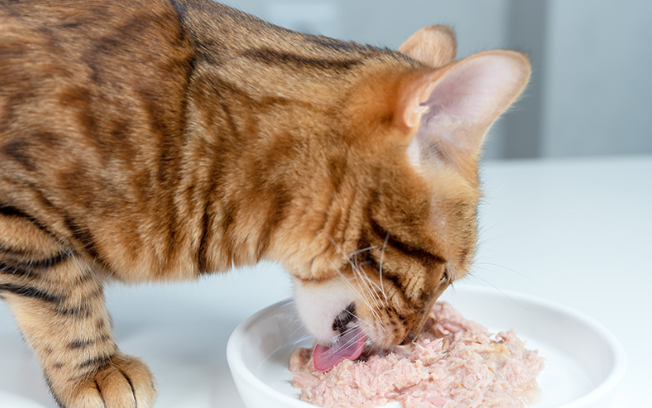Feeding cats a raw diet is becoming more common among pet owners who want greater control over their pet’s nutrition. One of the most popular approaches is the BARF diet, short for “Biologically Appropriate Raw Food.” This method mimics what felines eat in the wild: raw meat, bones, and organs, with minimal or no carbohydrates. Preparing BARF cat food at home ensures freshness and ingredient quality but requires planning and nutritional awareness. This guide explains the basics of making raw cat food safely at home, helping you get started with the raw diet for cats while minimising health risks and maintaining nutritional balance.
Understand the Nutritional Needs of Cats
Cats are natural carnivores. This means their bodies need a diet mainly consisting of animal protein. Unlike omnivores, they have little need for carbohydrates. The foundation of a raw diet for cats should include muscle meat, organ meat, and raw edible bones, which provide calcium and phosphorus. Taurine, an essential amino acid, must be included and is naturally present in organ meats like the heart and liver.
A proper BARF recipe also requires small amounts of vitamins and minerals, often added through supplements or limited vegetables. However, overdoing supplements or altering the balance between meat and bone can lead to health issues. If you’re new to raw feeding, it’s best to follow a vet-approved formula or consult a pet nutritionist to ensure your cat gets complete and balanced meals.
Choose Safe, High-Quality Ingredients
Ensure you pick human-grade meat and organs from trustworthy providers. Avoid using supermarket meat sold for cooking with sauces or seasoning, as these contain additives that may harm your cat. For BARF cat food, you’ll typically need chicken or rabbit meat, hearts, livers, and small bones like chicken necks.
Never feed them cooked bones. They crack and pose a choking or digestive risk. When preparing bones, ensure they are raw and appropriate in size. Hygiene is also critical. Use separate chopping boards and utensils, clean surfaces thoroughly, and freeze any unused portions immediately to prevent bacterial contamination.
Basic BARF Recipe for Beginners
A simple BARF mix might include 80% muscle meat, 10% raw bone, and 10% organ meat, divided evenly between the liver and another organ like the kidney or spleen. You can also add a small amount of taurine supplement, omega-3 oil (from fish), and vitamin E. Fresh food for cats includes egg yolk, kelp, or pumpkin for digestive fibre.
Mix all ingredients in a large bowl and portion into freezer-safe containers for storage. Thaw individual servings as needed. Cats eat about 2–4% of their body weight daily, split into two meals. Monitor your cat’s weight and stool consistency. Adjust the quantity and balance as needed.
Transitioning Safely to a Raw Diet
Transitioning your feline from commercial to raw cat food must be done slowly. Start by mixing small amounts of raw with their usual food, increasing the ratio over 1–2 weeks. Monitor your cat’s reaction closely. Some felines may adapt to the change fast, while others need time.
Look for signs of successful adaptation, such as improved coat condition, better digestion, and increased energy. Consult your vet if your pet goes through lax stool or appetite loss. Clean all bowls and preparation surfaces thoroughly after each meal to avoid contamination.
Common Mistakes to Avoid
Avoid using too much liver or skipping bone content, as this can unbalance the calcium-to-phosphorus ratio. Don’t guess the recipe—BARF requires precision. Cleanliness is essential, as freezing does not remove all bacteria. Never feed wild-caught meat unless it’s properly processed.
Also, do not feed your cat an unbalanced raw diet long-term without monitoring their health. Cats can develop nutritional deficiencies or imbalances if the BARF formula is incorrect. Always update your approach with professional guidance and continue observing your cat’s condition.
Conclusion
Preparing BARF cat food at home gives you full control over what your cat eats and can improve their health if done correctly. By selecting safe ingredients, maintaining hygiene, and following a nutritionally balanced plan, you can confidently provide a proper raw diet for cats. Transition slowly, monitor closely, and adjust as needed to ensure your feline thrives on their new diet.
Discover BOM BOM and their vet-guided raw food solutions for cats to make the switch simple and safe.

